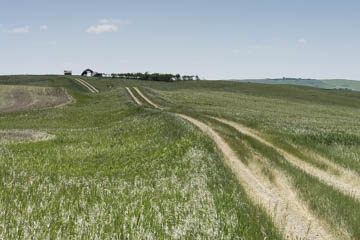Every Picture Is a Compromise
Lessons from the Also-rans
Most photography websites show the photographer's very best work. Wonderful. But that's not the full story of a creative life. If we want to learn, we'd better pay attention to the images that aren't "greatest hits" and see what lessons they have to offer. Every picture is a compromise — the sum of its parts, optical, technical, visual, emotional, and even cosmic – well, maybe not cosmic, but sometimes spiritual. Success on all fronts is rare. It's ok to learn from those that are not our best.
This is a series about my also-rans, some of which I've been able to improve at bit (i.e., "best effort"), none of which I would consider my best. With each there are lessons worth sharing, so I will.
Original digital captureWhat I saw that I liked:What is this photograph "about"? The road? The distant farm? What I don't like in the picture:Or is it about the vast space that is the central plains of North Dakota? And it if is about the vast stretching of the land, doesn't the one above draw our attention away from the land and zero us in on the road? What I learned:Perhaps the most important thing we do in the field is to listen to our inner voice and try to be in touch with what it is we want to communicate. I'd been thinking for days about how to photograph the endless wheat fields I was seeing. It took me a few days, but eventually I realized (duh!) that a panorama was the best way to do this. In the pano at left, the road is not the subject, but instead it emphasizes the vastness of the wheatfields. I would never have made this image if I hadn't (eventually) realized what I was really wanting to portray. |


